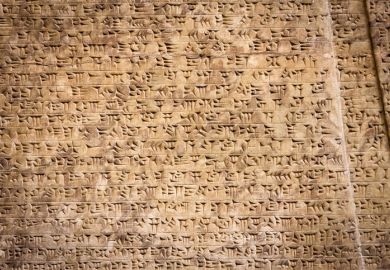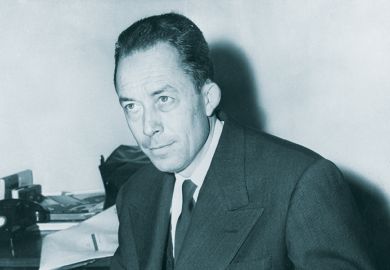While writing a PhD on Victorian Gothic fiction, I found that most criticism in the field was preoccupied with classifying the various forms this and related fictions took. Invoking Tzvetan Todorov and Freud, critics spent half their books worrying whether a tale should be classified as "fantastic" or "uncanny", while acknowledging a vast unclaimed borderland between the two.
Neil Wilson takes a more straightforward route, using the Oxford English Dictionary definition of supernatural as "anything which is contrary to or outside the laws and conventions of the natural world" before cataloguing the enormous body of fiction that falls within its gloomy dominions. His prefatory material perceptively peers into these muddy waters and offers useful insights into the various literary, antiquarian and folkloric streams that have poured into them.
The book has two introductions and an author's foreword. The first introduction is a brief essay by Ramsey Campbell, which, dwelling on the works of American and post-1950 practitioners, appears to function predominantly as a reminder of what the book itself was compelled to exclude. Wilson's own introduction, however, provides a wide-ranging and accessible overview of the origins, evolution and most persistent themes and archetypes of this popular and enduring mode.
For Wilson, it was "during the period 1820-1950 that a recognisably modern style of supernatural fiction emerged, distinct from earlier ghostly folk tales or the most recent macabre fantasies of the Gothic era". This was "the golden age", and there are rich pickings here. The greats, such as J. Sheridan le Fanu, Arthur Machen and M. R. James, rub shoulders with the obscure and even the abysmal, Wilson rightly observing that even the latter can "throw light on the evolution of popular themes... and the social attitudes of the time".
The entries are thorough, cogent and helpful. There is also a title index and a list of secondary works consulted. A short biography provides historical context and assesses each author's contribution to the tradition. First British editions of novels or short-story collections or anthologies containing first British book appearances of tales are then listed, and the titles of individual stories with a number indicating the volume and the order in which they appeared are also included.
The inclusions afford delights and surprises: I knew Robert Hitchens as the author of the infamous satire on the Wilde and Douglas affair, The Green Carnation (1895), but was intrigued to learn that he also wrote a handful of occult works. The exclusions bring the usual frustrations: what of Rider Haggard's She , or George Eliot's The Lifted Veil ? Surely these contain phenomena "contrary to natural laws"? And to allow the 1820 perimeter to exclude Charles Robert Maturin's Melmoth the Wanderer (1820), the last gasp of the early Gothic, but also highly influential in ushering in a new emphasis on psychological terror, seems unfortunate. Such nit-pickings aside, this bibliographical survey principally establishes how something that could be seen as a fictional backwater was swamped by some monumental names. From Dickens to Forster, Scott to Hardy, Gaskell to Henry James, scarcely a writer of note from the past two centuries did not, at some point, attempt to make their reader's flesh creep.
Few would contest the need for such a reference work. A more fundamental question is its usefulness in this format. The prefaces dwell on the necessary exclusions of a survey covering one country over a specified period, and deriving largely from a single, albeit superlative, collection. The intention is "to provide as complete a portrait of the genre as possible within the space available". The unstated premise here and in any printed work, is commercial: the bigger the book, the slimmer the (financial) margins. I could not help wondering why such a resource was not made available online. An online or electronic version would be able to include Irving, Poe, Hawthorne, Bierce or Lovecraft, to name only the American heavyweights that restrictions compelled it to exclude. It could stretch the chronological boundaries, and even anthologise some of the more recherché gems that will never again emerge from the British Library vaults into the light of common retail.
While technological and scientific advance may have done nothing to diminish our delight in the irrational, and while a fireside and bound book are still the best conditions for indulging this taste (as Stephen King now appears to acknowledge), surely the time has come for these advances to serve the cataloguing and referencing of an ever-expanding body of work. The ghosts should perhaps enter the machine.
Robert Mighall is the author of A Geography of Victorian Gothic Fiction : Mapping History's Nightmares .
Shadows in the Attic: A Guide to British Supernatural Fiction 1820-1950
Author - Neil Wilson
ISBN - 0 7123 1074 6
Publisher - British Library Publishing
Price - £45.00
Pages - 554
Register to continue
Why register?
- Registration is free and only takes a moment
- Once registered, you can read 3 articles a month
- Sign up for our newsletter
Subscribe
Or subscribe for unlimited access to:
- Unlimited access to news, views, insights & reviews
- Digital editions
- Digital access to THE’s university and college rankings analysis
Already registered or a current subscriber? Login



